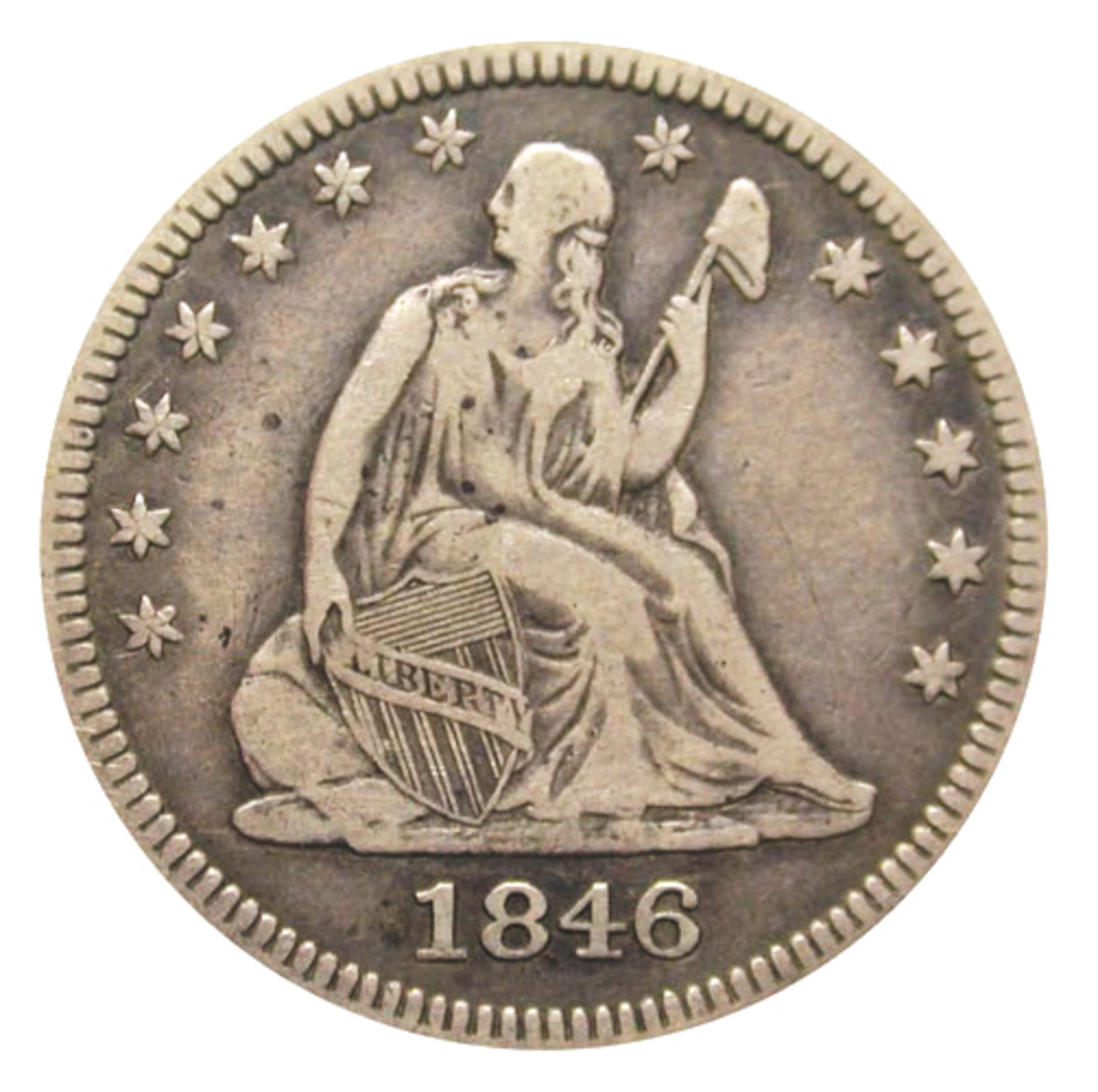Old quarters with good prices
The Seated Liberty design is one of the most common among the classic coinages of the United States, and we could also argue that it is the most popular. The artistry is that of Mr. Christian Gobrecht, the Mint’s third chief engraver, and this iconic design landed on everything from the tiny half-cent pieces to the large silver dollars. As for the quarters, the Seated Liberty’s design was first introduced in 1838 and lasted through 1891. In that span of decades, there have been some years of very high circulation and some incredibly low lows as well. There were also four mints that struck these quarters. Three branches that spawned these were New Orleans, San Francisco, and Carson City. With such a wide range of dates and mint marks, it seems there must be at least a few bargains in the mix. Let’s see what we can find.
First we should examine these heights. The Seated Liberty neighborhood came out of the gate quite strongly, with 466,000 minted in Philly in that first year. Oddly enough, it was the branch in The Big Easy that came very close to 1 million of those 25 cents just a few years later. The 1843-O is a fairly standard piece and not too expensive if it’s a medium edition. Importantly, the first date to thoroughly break the million mark was 1853, with the reduced standard for silver in the coin – there were 15.2 million of them. Anyway, that’s a lot of quarters. Ultimately there would be more than a dozen dates and mint marks, millions of which would be produced, with some dates reaching more than 10 million. So we actually have some very common dates within this series.
Second, with the cap on these pieces, let’s examine some prices. A quick scan through each price list in Numismatic News‘ Coin Market points out that one of the aspects of collecting that has been trending for a while – Mint State pieces – is probably outside of our comfort zone. Using the 1853 and the 1876 as two examples because they are remarkably common, we find that Mint State specimens cost at least $1,000 in MS-60. That’s a lot for a single coin, whether it’s classic silver or not. But if we’re willing to slide down a grade or two, maybe to AU50, the grade drops to around $350 for each. That’s quite a difference considering how close one of these notes is to the other.
With both of these qualities in mind, it’s wise to look through the entire series and look for other command prices that are roughly similar but with circulation numbers considerably lower. Two early dates that we might single out a little are 1846 and 1849. Neither has a particularly high official mintage – the first being 510,000 and the second 340,000 – but both come with price tags that aren’t too different from the more common ones Pieces we just saw. Now, around $425 is enough for an AU-50 specimen. And again the starting point for prices seems to be going from AU to MS. If we could get our hands on one of these, it would be a bargain purchase indeed. So it seems that we found two pieces of remarkable information. We’ve found that the boundary between AU and MS seems to be where the big price differences lie. Additionally, we seem to have found that we can look at coins with official denominations well under 1 million coins and still not have to pay much more for them.
Third, but let’s do this comparison with some of the short run data. In an interesting twist, there are several years when making quarters must have been an afterthought for the folks at one of the four mints. For example, the main plant in the City of Brotherly Love produced only 13,600 seats for Liberty Quarters in 1879. Three years earlier, the Wild West branch managed to mint 4,944,000 of the 1876 CC version of this 25 cent piece. Perhaps because Philly coins do not have the color and swing of a “CC” minted coin, this very rare 1879 is priced at only $700 as an AU-50 piece, while the 1876-CC costs $350 the same Note – which means that a coin that is 363 times less common than the “CC” only costs twice as much. It’s hard to argue that spending $700 on a piece of classic US silver is a bargain, but this comparison and these two prices give us food for thought.
Finally, it’s probably wise to realize that this series is big enough that we should revisit it at some point in the future. At this moment, all we did was a quick comparison between some very common dates, some that fall in the middle, and one that’s downright scarce. We didn’t look at the entire series in terms of what $100 could get us. Also, we didn’t even mention the rather elusive beast in this line-up, the Proofs. On the other hand, we have found an apparent dividing line between the usual prices and the qualities that command unusual prices. Overall, what’s important is that we’ve seen that there are indeed some bargains to be had in the long line of dates that make up the Seated Liberty quarter-series.


Comments are closed.